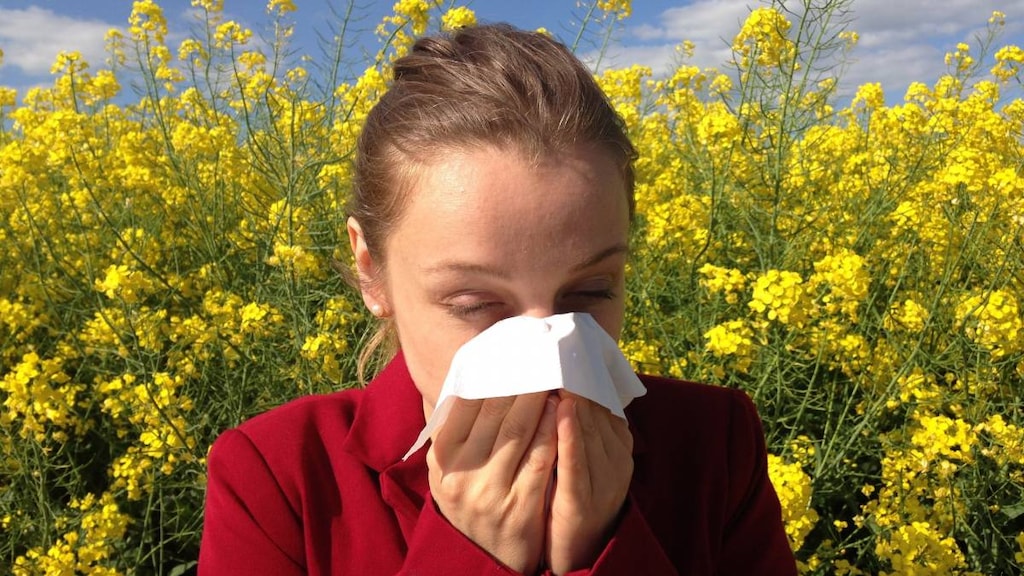Boxed Warning
Severe allergic reactions:
Grass pollen allergen extract can cause life-threatening allergic reactions such as anaphylaxis and severe laryngopharyngeal restriction. Do not administer to patients with severe, unstable, or uncontrolled asthma. Observe patients in the office for at least 30 minutes following the initial dose. Prescribe auto-injectable epinephrine, instruct and train patients on its appropriate use, and instruct patients to seek immediate medical care upon its use. Grass pollen allergen extract may not be suitable for patients with certain underlying medical conditions that may reduce their ability to survive a serious allergic reaction. Grass pollen allergen extract may not be suitable for patients who may be unresponsive to epinephrine or inhaled bronchodilators, such as those taking beta-blockers.
Dosage Forms
Excipient information presented when available (limited, particularly for generics); consult specific product labeling.
Tablet, Sublingual [preservative free]:
Oralair: 300 IR (30s)
Oralair Adult Sample Kit: 300 IR (9s)
Oralair Childrens and Adolescents Sample Kit: 100 IR (3s) & 300 IR (6s)
Pharmacology
Mechanism of Action
Grass pollen allergen extract is a mix of the following 5 pollens: Sweet vernal, orchard, perennial rye, timothy, and Kentucky blue grass. While the exact mechanism has not been fully elucidated, specific immunotherapy (SIT) may act by inducing a switch from T helper 2 cell response (Th2) to T helper 1 cell (Th1) response resulting in decreased interleukin-4 (IL-4) and interleukin-5 (IL-5) and increased interleukin-10 (IL-10), production of IgG-blocking antibodies that compete with IgE antibodies for allergen binding, proliferation of regulatory T lymphocytes and cytokines, and decreases in mast cells, eosinophils, and early- and late-phase allergic responses (Leith, 2006).
Use: Labeled Indications
Grass pollen-induced allergic rhinitis: Immunotherapy for the treatment of grass pollen-induced allergic rhinitis with or without conjunctivitis confirmed by positive skin test or in vitro testing for pollen-specific IgE antibodies for any of the 5 grass species contained in this product in patients 5 to 65 years of age. Not indicated for the immediate relief of allergy symptoms.
Contraindications
Hypersensitivity to any of the inactive ingredients (mannitol, microcrystalline cellulose, croscarmellose sodium, colloidal anhydrous silica, magnesium stearate and lactose monohydrate) contained in this product or any component of the formulation; severe, unstable or uncontrolled asthma; history of any severe systemic allergic reaction; history of any severe local reaction to sublingual allergen immunotherapy; history of eosinophilic esophagitis
Canadian labeling: Additional contraindications (not in US labeling): Immunotherapy is not indicated if a patient has not demonstrated symptoms, IgE antibodies, positive skin tests, or properly controlled challenge testing; concomitant therapy with beta-blockers or ACE inhibitors; severe and/or unstable asthma (FEV1 <70% of predicted value); severe immune deficiency or autoimmune disease; any malignant disease (eg, cancer); oral inflammation (eg, oral lichen planus, oral ulcerations, or oral mycosis)
Dosage and Administration
Dosing: Adult
Dosage strength expressed in Index of Reactivity (IR). Note: Initiate treatment 4 months before expected onset of each grass pollen season and continue throughout pollen season. Safety of initiating treatment during grass pollen season or restarting treatment after missing a dose have not been established.
Grass pollen-induced allergic rhinitis: Sublingual: Adults ≤65 years: 300 IR once daily
Dosing: Pediatric
Note: Dosage strength expressed in Index of Reactivity (IR). Initiate treatment 4 months before expected onset of each grass pollen season and continue throughout pollen season. Safety of initiating treatment during grass pollen season or restarting treatment after missing a dose have not been established.
Grass pollen-induced allergic rhinitis:
Children ≥5 years and Adolescents ≤17 years: Sublingual: Initial: Day 1: 100 IR once daily; Day 2: 200 IR once daily; Maintenance (Day 3 and thereafter): 300 IR once daily
Adolescents ≥18 years: Sublingual: 300 IR once daily
Administration
Sublingual: Administer first dose in a health care setting due to the potential for allergic reactions; monitor patient for 30 minutes after first dose. If well tolerated, subsequent doses may be taken at home. Remove sublingual tablet from blister immediately prior to administration. Place tablet(s) under tongue until completely dissolved (≥1 minute) and then swallow. Wash hands after handling tablet. Avoid food or beverage for 5 minutes following dissolution of tablet (to prevent the swallowing of allergen extract). Auto-injectable epinephrine should be made available to patients.
Storage
Store between 20°C and 25°C (68°F and 77°F); excursions are permitted between 15°C and 30°C (59°F and 86°F). Protect from moisture.
Drug Interactions
Angiotensin-Converting Enzyme Inhibitors: May enhance the adverse/toxic effect of Grass Pollen Allergen Extract (5 Grass Extract). Specifically, ACE inhibitors may increase the risk of severe allergic reaction to Grass Pollen Allergen Extract (5 Grass Extract). Consider therapy modification
Beta-Blockers: May enhance the adverse/toxic effect of Grass Pollen Allergen Extract (5 Grass Extract). More specifically, Beta-Blockers may inhibit the ability to effectively treat severe allergic reactions to Grass Pollen Allergen Extract (5 Grass Extract) with epinephrine. Some other effects of epinephrine may be unaffected or even enhanced (e.g., vasoconstriction) during treatment with Beta-Blockers. Consider therapy modification
Adverse Reactions
Frequency of adverse reactions similar in adult and pediatric patients, unless otherwise noted.
>10%:
Gastrointestinal: Oral itching (25%)
Respiratory: Throat irritation (22%)
1% to 10%:
Cardiovascular: Lip edema (4%)
Central nervous system: Oral paresthesia (4%), voice disorder (children and adolescents: 3%), oral hypoesthesia (2%)
Dermatologic: Pruritus of ear (8%), tongue pruritus (8%), atopic dermatitis (children and adolescents: 3%)
Gastrointestinal: Abdominal pain (4%), dyspepsia (4%), lip pruritus (children and adolescents: 3%), stomatitis (2%), dysphagia (<2%), esophageal pain (<2%), gastritis (<2%), gastroesophageal reflux disease (<2%), nausea (<2%), vomiting (<2%)
Hypersensitivity: Mouth edema (8%), tongue edema (3%)
Respiratory: Asthma (children and adolescents: 7%), cough (7%), tonsillitis (children and adolescents: 6%), oropharyngeal pain (5%), pharyngeal edema (4%), upper respiratory tract infection (children and adolescents: 4%)
<1%, postmarketing, and/or case reports: Allergic myocarditis, anaphylaxis, angioedema, anxiety, asthenia, chest discomfort, chronic lymphocytic thyroiditis, circulatory shock, diarrhea, dizziness, drowsiness, dry eye syndrome, dyspnea, enlargement of salivary glands, eosinophilia, eosinophilic esophagitis, exacerbation of asthma, facial edema, flu-like symptoms, flushing, gastroenteritis, headache, hypersensitivity reaction, hypotension, laryngeal edema, local hypersensitivity reaction, loss of consciousness, lymphadenopathy, malaise, oropharyngeal blistering, pallor, palpitations, peripheral vascular disease, pruritus, sialorrhea, skin rash, stridor, tachycardia, tinnitus, weight loss, wheezing, xerostomia
Warnings/Precautions
Concerns related to adverse effects:
- Eosinophilic esophagitis: Eosinophilic esophagitis has been reported with use. Discontinue therapy in patients who experience severe or persistent gastroesophageal symptoms (including dysphagia or chest pain) and consider a diagnosis of eosinophilic esophagitis.
- Hypersensitivity reactions: [US Boxed Warning]: Severe, life-threatening allergic reactions, including anaphylaxis and severe laryngopharyngeal restrictions, may occur. Discontinue use if systemic allergic reactions occur. Re-evaluate patients with escalating or persistent local reactions; consider discontinuation. Increased risk of local or systemic adverse reactions may occur when given with concomitant allergen immunotherapy; the initiation of therapy during grass pollen season may increase the risk of adverse reactions.
Disease-related concerns:
- Respiratory disease: [US Boxed Warning]: Do not administer to patients with severe, unstable, or uncontrolled asthma; use has not been studied in patients with moderate or severe asthma or in patients requiring daily medication. Withhold treatment if patient is experiencing an acute asthma exacerbation. Re-evaluate patients with recurrent asthma exacerbations and consider discontinuation.
Concurrent drug therapy issues:
- Vaccines: Effect of vaccination during therapy has not been evaluated.
Dosage form specific issues:
- Lactose: May contain lactose.
Other warnings/precautions:
- Administration: [US Boxed Warning]: Auto-injectable epinephrine should be prescribed to patients; instruct patients on appropriate use and to obtain immediate medical care upon its use.
- Appropriate patient selection: [US Boxed Warning]: Use may not be suitable for patients with conditions that may reduce their ability to survive a serious allergic reaction, including but not limited to compromised lung function (either chronic or acute) and cardiovascular conditions (eg, unstable angina, recent MI, arrhythmia, and uncontrolled hypertension).
- Appropriate use: [US Boxed Warning]: Use may not be suitable for patients who may be unresponsive to epinephrine or inhaled bronchodilators due to concomitant drug therapy. The effect of epinephrine may be potentiated or inhibited by the following medications: beta blockers, alpha blockers, ergot alkaloids, tricyclic antidepressants, levothyroxine, monoamine oxidase inhibitors, antihistamines, cardiac glycosides, and diuretics.
- Monitoring: [US Boxed Warning]: Monitor all patients for at least 30 minutes after initial dose in a health care setting. Each subsequent dose in pediatric patients should be done under direct adult supervision.
- Oral inflammation/wounds: Discontinue therapy to allow for complete healing of the oral cavity due to oral inflammation (eg, oral lichen planus, mouth ulcers, or thrush) or oral wounds following oral surgery or dental extraction.
Monitoring Parameters
Signs/symptoms of hypersensitivity; monitor patients for at least 30 minutes after administration of first dose.
Pregnancy
Pregnancy Considerations
Adverse events have not been observed in animal reproduction studies.
Patient Education
- Discuss specific use of drug and side effects with patient as it relates to treatment. (HCAHPS: During this hospital stay, were you given any medicine that you had not taken before? Before giving you any new medicine, how often did hospital staff tell you what the medicine was for? How often did hospital staff describe possible side effects in a way you could understand?)
- Patient may experience cough; ear, mouth, or throat itching; or throat pain or irritation. Have patient report immediately to prescriber difficulty swallowing, difficulty speaking, painful swallowing, heartburn, chest pain, fast heartbeat, passing out, dizziness, flushing, shortness of breath, persistent cough, severe diarrhea, severe nausea, vomiting, abdominal cramps, or severe abdominal pain (HCAHPS).
- Educate patient about signs of a significant reaction (eg, wheezing; chest tightness; fever; itching; bad cough; blue skin color; seizures; or swelling of face, lips, tongue, or throat). Note: This is not a comprehensive list of all side effects. Patient should consult prescriber for additional questions.
Intended Use and Disclaimer: Should not be printed and given to patients. This information is intended to serve as a concise initial reference for healthcare professionals to use when discussing medications with a patient. You must ultimately rely on your own discretion, experience and judgment in diagnosing, treating and advising patients.




